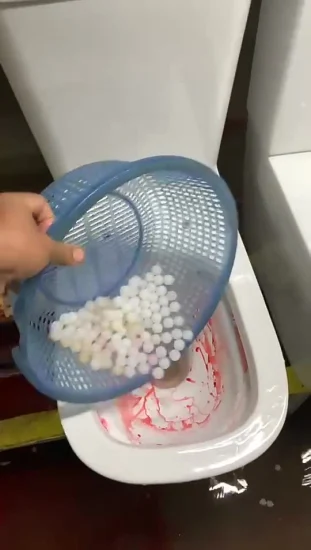Is it Suitable to Dispose of Food in the Toilet?
Is it Suitable to Dispose of Food in the Toilet?
Blog Article
What are your ideas about Think Twice Before Flushing Food Down Your Toilet?

Introduction
Lots of people are usually confronted with the issue of what to do with food waste, particularly when it comes to leftovers or scraps. One common concern that develops is whether it's alright to purge food down the bathroom. In this post, we'll look into the reasons people may think about flushing food, the consequences of doing so, and different approaches for appropriate disposal.
Reasons individuals might take into consideration flushing food
Absence of understanding
Some people might not recognize the potential damage triggered by flushing food down the bathroom. They may wrongly believe that it's a safe technique.
Convenience
Purging food down the bathroom might look like a quick and very easy service to taking care of undesirable scraps, specifically when there's no nearby trash can available.
Laziness
In some cases, individuals might just pick to flush food out of sheer negligence, without thinking about the effects of their activities.
Repercussions of flushing food down the toilet
Environmental impact
Food waste that winds up in waterways can add to contamination and injury marine ecosystems. In addition, the water utilized to purge food can strain water sources.
Plumbing concerns
Purging food can lead to blocked pipelines and drains, triggering pricey pipes repairs and troubles.
Sorts of food that need to not be flushed
Coarse foods
Foods with fibrous textures such as celery or corn husks can obtain tangled in pipelines and trigger clogs.
Starchy foods
Starchy foods like pasta and rice can soak up water and swell, bring about blockages in pipelines.
Oils and fats
Greasy foods like bacon or cooking oils must never be flushed down the commode as they can solidify and trigger clogs.
Correct disposal methods for food waste
Making use of a waste disposal unit
For homes geared up with waste disposal unit, food scraps can be ground up and purged through the pipes system. However, not all foods are suitable for disposal in this way.
Recycling
Specific food packaging materials can be recycled, decreasing waste and reducing environmental impact.
Composting
Composting is an eco-friendly means to throw away food waste. Organic products can be composted and utilized to improve soil for gardening.
The relevance of appropriate waste management
Reducing ecological harm
Appropriate waste management techniques, such as composting and recycling, help lessen contamination and preserve natural resources for future generations.
Protecting plumbing systems
By preventing the technique of flushing food down the commode, homeowners can avoid expensive plumbing fixings and keep the honesty of their pipes systems.
Conclusion
In conclusion, while it might be appealing to flush food down the commode for benefit, it is essential to comprehend the possible repercussions of this activity. By embracing appropriate waste monitoring methods and taking care of food waste responsibly, people can add to healthier plumbing systems and a cleaner environment for all.
THINK TWICE BEFORE FLUSHING FOOD DOWN YOUR TOILET IN FALLBROOK CA
Let’s be honest, we’re really supposed to be tossing rotten or leftover food in the compost bin or trash can. But many people like to place scraps of food down the drain of, say, their kitchen sink. That’s why the garbage disposal was invented: so we can continue to place certain foods down the drain without clogging our drain in the process. Smart.
But not all of us have the luxury of having a garbage disposal installed. So, you might continue to shove food down your sink drain anyway – or worse: you might flush them down your toilet! If you’re guilty of doing the latter, you’re going to want to stop, and here’s why:
Toilet Drains Aren’t Designed to Handle Food!
There’s your answer: food just doesn’t belong in your toilet. It may seem like your toilet drain is wider than the drains of your sinks, but truth be told, that isn’t actually the case. The narrower pipes of your toilet leave your plumbing at risk for clogging if you do happen to flush your food. In addition, food doesn’t break down as quickly that toilet paper and human waste do. In turn, this leaves your toilet at risk for a nasty clog.
Although a flush of a tiny pinch of food every now and then isn’t going to completely damage your toilet, there are certain foods that should absolutely not be flushed in your toilet at all. These include starchy foods like mashed potatoes, grains, hard pieces of food that are slow to break down, and fats and oils.
The latter categories of food are particularly problematic as they may harden, expand as they absorb water, break down slowly in your system, or generally create the perfect obstruction with their gelatinous composition. These are all things you don’t want in your plumbing system!
Experiencing a Toilet Clog?
Nobody’s perfect, and we all make mistakes. Sometimes one of the mistakes people make is flushing food down their toilet and later realizing that it wasn’t the best thing to do once they see that their toilet is now clogged. Uh-oh!

I found that write up about Think Twice Before Flushing Food Down Your Toilet while doing a search on the search engines. If you liked our blog post please be sure to share it. Thank you for being here. Kindly pay a visit to our website back soon.
At This Website Report this page